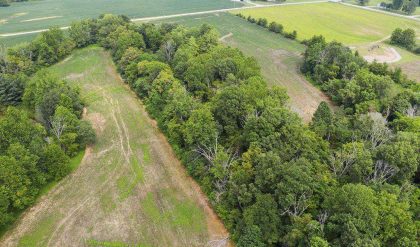Informality in credit markets is strong in many developing countries like India, Pakistan, Indonesia, Brazil and many African countries, but also in emerging market countries like China. Unfortunately, data on the size of informal credit markets is scant. According to Bell (1990), over 80 percent of all Indian rural households’ debt was borrowed from the informal credit agencies (excluding relatives and friends which cover about 11 percent) in 1951 but it was a mere 24 percent in 1981. At the same time, the proportion of debt owed to the formal credit institutions has risen dramatically overtime from 61 percent in 1981 to 7 percent in 1951 and thus the share of informal credit markets is about 39 percent. This follows the creation of the rural cooperatives in the 1950s that is believed to have displaced the informal moneylenders in India. However, such figures for the informal credit market have not changed very much in the 1980s. Data from the All-India Debt and Investment Survey (AIDIS, 2003) shows that for the Indian economy the share of moneylenders is over 9 percent while the share of non-institutional to total is over 36 percent. From the above trends, an additional set of stylized facts (SF) emerges:
· economies with less developed credit markets tend to have more segmented credit markets, and thus, greater informal credit markets (SF 15).
In conjunction with the previous stylized fact, Barth et al. (2004) and Beck et al. (2004) observe that:
· both formal and informal lenders in less developed credit markets have extensive market power (SF 16).
However, the creation of the rural cooperatives in India does not enhance the volume of funds available in credit markets but also increases competition in the formal credit markets, inducing another stylized fact:
· informal credit is more important the more concentrated are formal credit markets (SF 17).
Further relevant evidence for China can be found in Cull and Xu (2005), Chen and Degryse (2008) and Ayyagari et al. (2008).
There are some mixed trends in the distribution of credit when both formal and informal credit markets are present:
· the distribution of formal loans to rural households favors wealthy borrowers or large farms while the majority of informal loans were distributed to poor borrowers or small farms (SF 18).
Relevant evidence can be found in Siamwalla et al. (1990) for Thailand and Kochar (1997) and Banerjee and Duflo (2007) for India; a high proportion of all borrowers obtain credit from both formal and informal credit markets simultaneously (SF 19). See Das-Gupta et al. (1989) for India, Conning (2001) for Chile and Gine (2007) for Thailand; and
· informal moneylenders obtain formal credit to fund their informal credit services (SF 20).
See Hoff and Stiglitz (1990), Ghate et al. (1992), Irfan et al. (1999) and Madestam (2009). Credit may be rationed in some periods and credit markets are segmented with local moneylenders, borrowers with no collateral may have to seek informal credit with high interest rates. Interest rates charged by moneylenders in informal credit markets may exceed 75 percent per year (Besley (1994) and Hoff and Stiglitz (1990)).
· informal interest rates are on average much higher than formal rates (SF 21).
Furthermore, Banerjee (2003) shows that:
· interest rates charged by informal moneylenders may range from 0 to 200 percent per year in India, Pakistan, and Thailand (SF 22).
The theoretical rationale for multiple informal interest rates will be reviewed in chapter V.






Comments are closed.